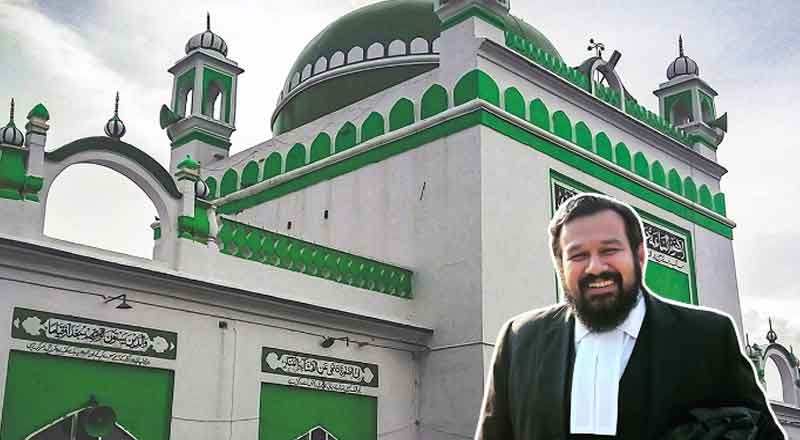India’s Balancing Act in Religious and Legal Complexities
India, with its rich and diverse cultural heritage, often finds itself at the intersection of historical narratives and contemporary legal debates. One such instance is the ongoing dispute surrounding the Shahi Jama Masjid in Sambhal, Uttar Pradesh. Once a relatively obscure district, Sambhal has now entered the national spotlight following violent clashes and legal battles. This dispute intertwines deeply with the Places of Worship Act, 1991, raising questions about the preservation of historical identity versus modern religious sentiments.
Historical Context: The Shahi Jama Masjid and Its Origins
The Shahi Jama Masjid in Sambhal is a Mughal-era Mosque, believed to have been constructed during Emperor Babur’s reign (1526-1530) by his general, Mir Hindu Beg. Some historians attribute its architectural features to the Tughlaq era, with modifications made during Babur’s time. Positioned on a hill in the heart of Sambhal, this mosque exemplifies Mughal architectural ingenuity.
However, contesting narratives challenge this history. Petitioners claim that the mosque was built over an ancient Hindu temple, the Shri Hari Har Mandir, dedicated to Lord Vishnu and Lord Shiva. According to their argument, the site’s significance predates recorded history, allegedly linked to the mythological architect Vishwakarma.
The Legal Battle: Claims, Counterclaims, and Violence
The dispute escalated when petitioners filed a plea in a Sambhal civil court, asserting that the mosque occupies the site of a destroyed Hindu temple. They sought legal recognition of the original religious character of the site, demanding surveys to substantiate their claims.
In response, the Sambhal court ordered a survey of the mosque. A preliminary assessment occurred on November 19, but tensions peaked during a subsequent survey on November 24, leading to violent clashes that claimed four lives and injured many.
The mosque’s managing committee then moved the Supreme Court, alleging procedural lapses and questioning the survey’s legitimacy. Their plea highlighted the broader implications of such actions on other contested religious sites, bringing the case under the purview of the Chief Justice of India.
The Places of Worship Act, 1991: A Key Legal Pillar
Central to this debate is the Places of Worship Act, 1991, which mandates that the religious character of any place of worship as it stood on August 15, 1947, must remain unchanged. This legislation, introduced to preserve communal harmony, exempts only the Ayodhya dispute from its provisions.
Critics of the Sambhal mosque case argue that the petitioners’ claims violate this act. However, supporters point to legal nuances, citing Justice DY Chandrachud’s 2022 observation that while altering a site’s religious character is prohibited, inquiring into its pre-1947 identity is not necessarily unlawful.
This ambiguity has fueled ongoing debates, with the Sambhal mosque case paralleling other high-profile disputes, such as the Gyanvapi mosque-Kashi Vishwanath temple issue.
The Social Impact: Violence and Polarization
The dispute has intensified communal tensions, as seen in the violent clashes in Sambhal. Protesters on both sides have raised questions about historical accountability, legal processes, and modern-day religious rights. Organizations like the Hindu Sena, led by Vishnu Gupta, have been vocal in mobilizing public sentiment around such cases, further polarizing communities.
Meanwhile, local and national authorities face immense pressure to maintain law and order while ensuring justice is served. The role of judicial oversight in diffusing tensions and offering clarity on the legal standing of such disputes is crucial.
Broader Implications: Balancing History and Harmony
The Sambhal mosque dispute is not an isolated case. It underscores broader challenges India faces in reconciling its historical narratives with contemporary pluralistic ideals. Such cases also test the resilience of the Places of Worship Act, with four petitions challenging its validity pending in the Supreme Court.
Beyond legal complexities, these disputes risk disrupting communal harmony and diverting attention from pressing developmental issues. Stakeholders must tread carefully, balancing historical exploration with sensitivity to modern-day religious coexistence.
Charting a Path Toward Resolution
The Sambhal mosque case is emblematic of India’s struggle to navigate its layered history within the framework of modern legal and social principles. While the Supreme Court’s verdict is awaited, this case offers an opportunity to reaffirm the country’s commitment to constitutional values and communal harmony.
By addressing such disputes with legal clarity, historical rigor, and social sensitivity, India can pave the way for inclusive progress. The ultimate goal should be to foster unity, ensuring that the past informs the present without dividing it. Through thoughtful resolutions, India can continue its journey as a vibrant, diverse democracy where history and harmony coexist.
(With inputs from agencies)





